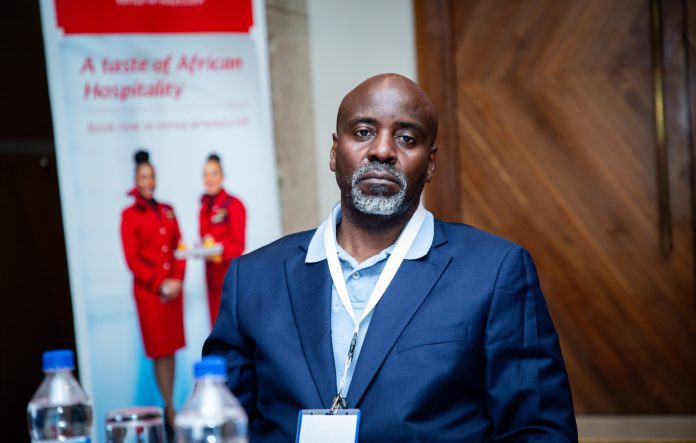Every now and then, analysts from other fields decide to take a crack at auditing the aviation industry. Armed with confidence and a LinkedIn account, they dive into this high-altitude, high-complexity sector – usually without the necessary depth of knowledge. Just because someone has banking knowledge or writes a flashy post about airline turnarounds doesn’t mean they are suddenly the next aviation whisperer. Expertise doesn’t come from hashtags and hot takes – especially when the engines of this industry are a little more complicated than a spreadsheet.
Take Kenya Airways, for example. Critics often ask; how is it that the national airline has been flying for years but only managed to land a net profit once in the last decade – just last year? Some dismiss it as a tragicomedy in the skies, but that is as misguided as mistaking aerospace-grade speed tape for regular duct tape. (Spoiler: one holds parts of a plane together at 500 knots; the other barely holds your TV remote). Maybe what we need here isn’t blind panic – but a crash course (figuratively, of course) in how airlines actually work. Here we go.
A balance sheet is just one piece of the puzzle when judging a national airline’s success – it is not the whole flight plan. Take Kenya Airways: it pumps a cool USD 2.6 billion into Kenya’s GDP, fuels government coffers with tax revenues and provides over 5,000 direct jobs. But it does not stop there – 20,000 more people work in roles tied to the airline and nearly 300,000 livelihoods take off thanks to ripple effects in tourism and other industries. Still calling it a failure? Maybe you are just cruising at the wrong altitude of understanding.
Sure, Kenya Airways was flying high with profits before 2012 – no argument there. But let us not pretend that Project Mawingu was some delusional pipe dream cooked up in a boardroom over too much coffee. The expansion plan ran into turbulence from forces no airline could control: an Ebola outbreak that shut down KQ’s golden routes in West Africa, the Westgate terror attack that scared off European tourists faster that you can say “travel advisories,” delayed deliveries of the much-hyped B787 Dreamliners that the whole strategy was built around and – and just to complete the disaster bingo – a fire at KQ’s JKIA hub. Honestly, who could have seen all that coming? Nostradamus? A clairvoyant with a pilot’s license?
The Covid-19 pandemic hit every corner of the globe – and when it landed in the aviation sector, it grounded every airline. For a year, commercial air travel was essentially nonexistent. And here is a shocker; no flights = no revenue. Capisce? You would think that is common sense. But hey, in today’s world, maybe that is asking too much. This shortage of basic understanding seems to have made its way into the commentary around Kenya Airways’ 2024 results.
Ten aviation lessons for dummies (with a side of humor)
Let us set the record straight. First, KQ posted a pretax profit of Ksh 16 billion – not the Ksh 5.5 billion figure that has been bouncing around like a misfired spreadsheet. Second, while there was a foreign exchange gain, it accounted for only Ksh 1.2 billion of the Ksh 5.4 billion net profit. The rest? That came from good old-fashioned operational excellence; revenue went up, costs went down. Magic? No. just solid management. All this information is sitting right there in KQ’s audited accounts. Read them sometime – it might do certain skeptics a world of good. Or at least, stop them from confusing facts with fiction.
Industry insiders know the score; ever since Covid crash-landed the scene, the aviation sector has been battling a turbulent supply chain. Aircraft spare parts? Stuck somewhere between “ordered” and “who knows.” Engine workshops” They are so swamped, an overhaul that used to take four weeks now needs a full six months – longer than some celebrity marriages.
Even shiny new planes are caught in the chaos. Boeing and Airbus are sitting on a combined backlog of over 17,000 aircraft. To put that in perspective, if you ordered a brand-new jet today, it would be ready around 2036. Yes, you might have grandkids by then.
So, what is the solution? Airline alliances. American, European and Asian carriers have already teamed up, sharing everything from maintenance costs to spare parts, training programs and probably office gossip. It is a textbook case of economies of scale. Africa needs such alliances. SAA may have ghosted the alliance party but Kenya Airways is still swiping right, hoping to match with the right partner. Because honestly – who wants to grow old, grey and grounded alone?
Let’s get one thing straight: Kenya Airways’ turnaround strategy, Operation Kifaru, is actually working. Yes – working! The airline is now shifting gears towards recapitalization, not digging deeper into debt, but through equity from a strategic investor. Groundbreaking? Not quite. It’s been explained more times than a politician’s broken promise.
Now to the skeptics; KQ would love to show you its fuel receipts. Really. But let us be honest – would you even understand them? If clear-cut industry challenges are reduced to buzzwords like “governance” or “discipline,” how do you expect to wrap your heads around the intricacies of airline operations? This isn’t your neighbourhood kiosk.
Here is a pro tip: KQ is a publicly listed company. Its financials are audited and annually published for all to see – assuming you can read them. There are no backroom cigar deals or hidden vaults. This is not a secret society; it is an airline.
The global aviation industry is still recovering from the chaos of Covid-19. Wailing and finger-pointing won’t speed up aircraft production or fix supply chain issues. Tantrums may work for toddlers and divas, but they don’t build airlines.
In aviation, freeloaders don’t fly. Strategic partners are chosen carefully – not because they are rich, but because they bring real value. That is how it works.
Also, KQ does not hedge foreign exchange. The profit in 2024? That was almost entirely operational excellence. Shocking, we know – good management still exists!
And to the pearl-clutchers wondering who would inject USD 500 million without demanding tight governance structures – here is a hint: absolutely no one! Money does not come with a blindfold. So, if you are outraged on behalf of good governance, you are late to the party. It is already baked in the deal!
Maybe the real discipline needed isn’t the airline – but among the skeptics who keep yelling at the clouds, ignoring publicly available facts and figures. KQ remains the Pride of Africa. Many countries on the continent without national carriers already treat it as their unofficial flag-bearer. The only reason some cannot grasp value? They are in the wrong lane. A word of advice: if your expertise is in banking, maybe don’t try to taxi a Boeing. Or better yet – sign up for Aviation 101 at KQ’s Pride Centre!








